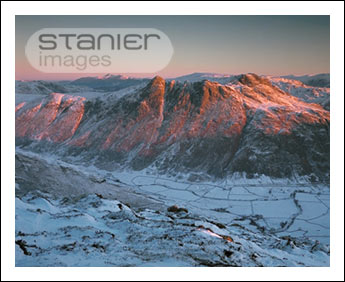
DIGITAL VS FILM in LANDSCAPE PHOTOGRAPHY
www.stanierimages.co.uk
>>> Herald the digital age
The digital versus film argument has for many been already settled. Digital has taken precedence. Even the movie world industry has moved more and more deeply into the digital age, many companies now producing their "films" on high definition digital cameras. There is no doubting the breathtaking pace of technological development in digital image capture. For sure, consumer 35mm film is practically finished, the quality of digital cameras offering extraordinary quality to even the most technophobic user.
>>> So what about Digital in the genre of landscape photography?
I have owned and used a large format 5x4" camera for almost 14 years, splashing out on expensive sheet film and processing through all those years. The business of large format photography is one of expense, hard work and specialisation. So with the herald of digital photography one might think the old fashioned bellows, dark cloth and ground glass screen after more than a century of service, is finally finished. Not yet. For sure, many photographers will be looking to maximise their time and effort to get their images into both their personal portfolios as well as into stock libraries and magazines. Digital is the most efficient method of producing photographs, and the quality of digital cameras is such that an A4 enlargement published in a magazine can look extremely impressive.
However, for all the bells and whistles of digital cameras, there is at present a compromise, should one use it for landscape photography and follow the route of increased productivity. Landscape photography offers a very wide range of lighting situations as well as a broad spectrum of colours, many of which are extremely subtle. It is clear to me that digital still cannot render properly the incredible detail of a landscape in sharpness and colour. It is true that film has it's limitations too, and the photographer either gets around them or exploits them where possible. But the principal reason for large format photography is to get maximum sharpness/resolution of the image, with fairly controllable colour rendition (to an extent controlled either by choice of film, or through colour balance filters that personally I rarely use). The question to ask is this: if you had the most dramatic scene your eyes had so far witnessed and had the choice to render that scene on one format, which would it be? The answer for anyone sensible should be the same - a 5x4 inch transparency (or even 10x8" if you can carry it!). It would certainly not be on a digital camera, even the new medium format ones. The truth is, where quality counts nothing yet competes with large format photography for landscape photography.
It is true though that much of the quality gained using a large format camera is lost when the image is produced in a magazine. Hence why prominent landscape photographer Colin Pryor has, controversially, switched to digital, despite being renowned for using panoramic format cameras to great effect. But the publishng world is a hungry giant and I am sure the commercial pressures to be productive have caused Colin to go the digital route. And why not, if his images are mostly used and seen in magazines.
So if one of Britain's most recognised landscape photographers uses digital for landscape photography then why this blog? The answer is simple. I produce original prints (original meaning the prints are produced directly from the original transparency for maximum quality) for display in frames. The prints I produce are cibachromes, bringing the best qualities out of large format transparencies. In my opinion digital does not compete with this level of sharpness and rendition of detail. The prints I produce are of the highest quality attainable. Moreover, the resolution of a large format transparency would, in my opinion, still attract those advertising agencies which want to produce large scale projects.
I am not defending film, or the traditional ways. I embrace technology wholeheartedly. I use digital for documentary and publicity work. It is has changed the face of the image market completely. Should digital exceed the quality of large format film one day and is affordable, I will be the first in the queue to buy that camera. Interestingly, that raises a question for another blog. Does the instant, non-methodological use of digital cameras and limitless exposure count mean the photographers eye becomes lazy? There is something special, unique and intensely involving when photographing something with a large format camera, looking at an upside down image on the ground glass with a black cloth over your head, while trying to hold it in a wind, calculating bellows extension and taking spot readings, manually cocking the shutter and aperture and loading a film holder etc. Perhaps this wonderful and skilled practice is reason alone to never completely abandon my large format camera, and until digital betters it, I won't.

